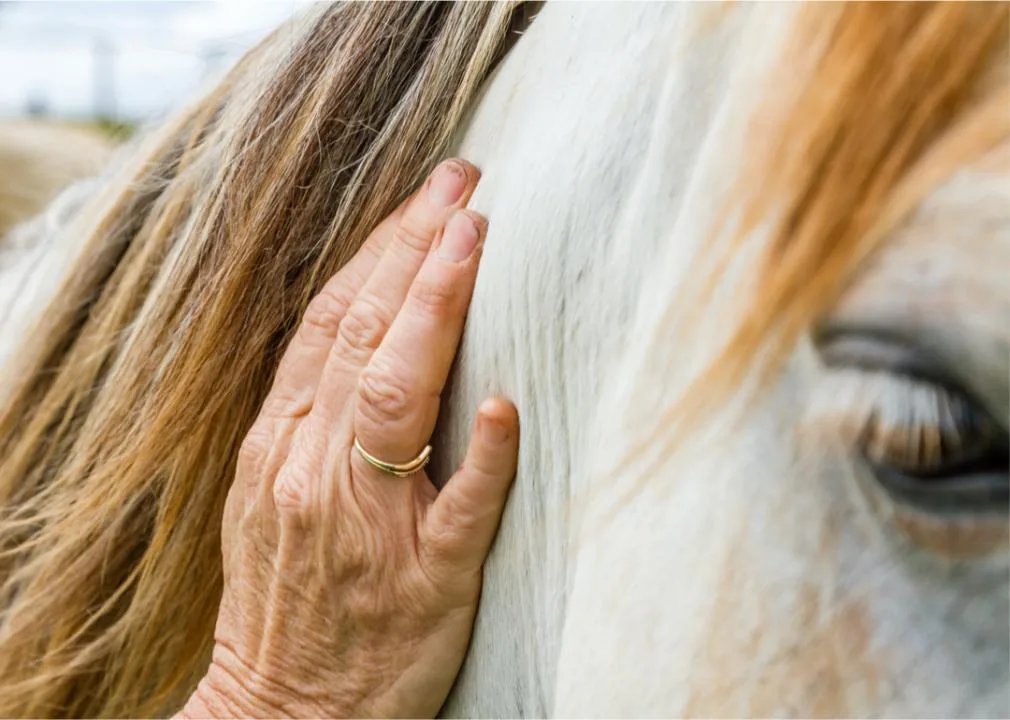Here's what we'll cover
Here's what we'll cover
Here's what we'll cover
Many people celebrate the birth of their child with a resounding “It’s a girl!” or “It’s a boy!” But these gender designations are made based on biological factors like which chromosomes and genitalia you have, and there is much, much more to gender identity than the anatomy with which we’re born.
As we grow up and explore who we are––and who we want to become––some experience discontentment or unease if their gender identity doesn’t match the assigned sex at birth. This is called gender dysphoria. While there has been a lot more awareness around it recently, we’re still learning more.
What is gender dysphoria?
The word dysphoria refers to a feeling of unease or discontent. It’s the opposite of euphoria, a state of happiness,
There are many types of dysphoria. Gender dysphoria occurs when you experience distress or discomfort because your gender identity doesn’t align with the biological sex you were assigned at birth.
Gender dysphoria is not the same as transgender, gender incongruence, gender nonconforming, or gender diverse. Someone who is transgender has a gender identity that doesn’t match their gender assignment, but they don’t necessarily experience distress from it. This is different from gender dysphoria, where an individual experiences severe distress and difficulty functioning on a day-to-day basis because of their gender identity (American Psychiatric Association, 2020).
How is gender dysphoria diagnosed?
Healthcare professionals diagnose gender dysphoria using the DSM-5 (Diagnostic and Statistical Manual of Mental Disorders), which is a manual for mental health professionals. People are typically diagnosed with gender dysphoria when their experience of distress revolves around two or more of the following characteristics, many of which may overlap to some degree (Cooper, 2020):
Conflict between gender identity and physical sex characteristics
Strong desire to be another gender
Wanting to be treated as another gender
Desire to have the physical sex characteristics of another gender (male, female, or non-binary, that is, neither male nor female)
Desire not to have the sex characteristics they were born with
A firm belief that they feel the same way as another gender
How common is gender dysphoria?
Understanding just how common gender dysphoria is can be tricky, mostly because there’s so much stigma around the topic, making it more difficult to get accurate numbers. One study estimates that roughly 1 in every 250 people in the United States (about one million adults in the US alone) identifies as transgender (Meerwijk, 2017).
Another study looked at the number of people who seek gender reassignment surgery and found it to be around 1/30,000 for MTF (male-to-female) and around 1/10,000 for FTM (female-to-male) transition requests (Judge, 2014). That said, these numbers still likely do not reflect the real numbers in the general population.
Because some questionnaires mislabel gender identity as sexual orientation, and some might not report their status due to stigma, the numbers are most certainly higher. And, of course, it’s not clear how many people who are transgender have gender dysphoria.
Complications of gender dysphoria
Gender dysphoria can make daily life difficult. It causes stress from being labeled as the wrong gender and creates pressure to live out expected gender roles and societal expectations. It also can trigger fears of being a target of transphobia (Cooper, 2020).
People with gender dysphoria frequently face social discrimination and stigmatization. This can even make it difficult to obtain employment or health insurance. People who are transgender sometimes need to help educate their own healthcare providers about their personal health needs, making it challenging to get appropriate and respectful medical care (Saleem, 2017).
People with gender dysphoria are also at higher risk for other mental health conditions such as anxiety, depression, substance use disorders, and suicide (Kameg, 2018).
How is gender dysphoria treated?
Gender dysphoria treatment involves the use of gender-affirming care to support an individual’s gender identity and ease distress. It includes different aspects like psychotherapy, hormone therapy, and surgery. No two people have the exact same feelings, so treatment is based on each individual’s needs.
Psychotherapy
Gender-affirming psychotherapy can help validate concerns and alleviate stress related to gender dysphoria. Mental health professionals can work with families of transgender people to increase education and support (Spivey, 2019). Social support during this time is critical since those experiencing dysphoria who lack support are at higher risk for substance abuse, suicidal ideation, or suicide attempts (Kameg, 2018).
Therapists also provide a support system as those with gender dysphoria decide whether to socially transition. This means presenting to society as their gender identity rather than what they were assigned. Therapists then again can offer support during the transition process.
Studies show that transgender children and adolescents who have support for their gender expression and social transitioning had less risk of developing depression and anxiety (Olson, 2016; Durwood, 2017).
Hormone treatment
Hormone therapy is beneficial for some individuals with gender dysphoria. Giving testosterone to a transgender male or estrogen to a transgender female helps develop secondary sex characteristics that match their gender identity. This can have mental health benefits as well, including decreased stress and improved quality of life (Mahfouda, 2019).
Gender-affirming surgery
Different types of gender-affirming surgery create physical characteristics that align with your identity. Surgical procedures include chest reconstruction (often called top surgery) and genital reconstruction (bottom surgery). Some studies show transgender individuals have higher self-esteem and less dysphoria, anxiety, and depression after gender-affirming surgery (Wernick, 2019).
Gender assignment might happen at or before birth, but gender identity is more complex. It does not always agree with its assignment. If this mismatch causes gender dysphoria, there are ways to address it.
Finding a healthcare professional skilled in transgender health concerns is helpful. Resources like the World Professional Association for Transgender Health (WPATH) offer information and provider directories to guide you.
DISCLAIMER
If you have any medical questions or concerns, please talk to your healthcare provider. The articles on Health Guide are underpinned by peer-reviewed research and information drawn from medical societies and governmental agencies. However, they are not a substitute for professional medical advice, diagnosis, or treatment.
References
American Psychiatric Association. (2020). What is Gender Dysphoria? Retrieved on Oct. 18, 2021 from https://www.psychiatry.org/patients-families/gender-dysphoria/what-is-gender-dysphoria
American Psychological Association (APA) . Definitions Related to Sexual Orientation and Gender Diversity in APA Documents. Retrieved on Oct. 11, 2021 from https://www.apa.org/pi/lgbt/resources/sexuality-definitions.pdf
Atkinson, S. R. & Russell, D. (2015). Gender dysphoria. Australian Family Physician , 44 (11), 792–796. Retrieved from https://pubmed.ncbi.nlm.nih.gov/26590617/
Chen, S. & Loshak, H. (2020). Primary Care Initiated Gender-Affirming Therapy for Gender Dysphoria: A Review of Evidence Based Guidelines [Internet]. Ottawa (ON): Canadian Agency for Drugs and Technologies in Health. Retrieved from https://www.ncbi.nlm.nih.gov/books/NBK563451/
Cooper, K., Russell, A., Mandy, W., & Butler, C. (2020). The phenomenology of gender dysphoria in adults: A systematic review and meta-synthesis. Clinical Psychology Review , 80,
doi: 10.1016/j.cpr.2020.101875. Retrieved from https://pubmed.ncbi.nlm.nih.gov/32629301/
Durwood, L., McLaughlin, K. A., & Olson, K. R. (2017). Mental Health and Self-Worth in Socially Transitioned Transgender Youth. Journal of the American Academy of Child and Adolescent Psychiatry, 56 (2), 116–123. doi: 10.1016/j.jaac.2016.10.016. Retrieved from https://www.ncbi.nlm.nih.gov/pmc/articles/PMC5302003/
Garg, G., Elshimy, G., Marwaha, R. Gender Dysphoria. (Updated 2020, Nov 29). StatPearls Publishing. Retrieved from https://www.ncbi.nlm.nih.gov/books/NBK532313/
Harry-Hernandez, S., Reisner, S. L., Schrimshaw, E. W., Radix, A., Mallick, R., Callander, D., et al. (2020). Gender Dysphoria, Mental Health, and Poor Sleep Health Among Transgender and Gender Nonbinary Individuals: A Qualitative Study in New York City. Transgender Health , 5 (1), 59–68. doi: 10.1089/trgh.2019.0007. Retrieved from https://pubmed.ncbi.nlm.nih.gov/32322689/
Judge, C., O’Donovan, C., Callaghan, G., Gaoatswe, G., & O’Shea, D. (2014). Gender dysphoria – prevalence and co-morbidities in an Irish adult population. Frontiers In Endocrinology. Retrieved Nov. 29, 2021, from https://www.frontiersin.org/articles/10.3389/fendo.2014.00087/full
Kameg, B. N. & Nativio, D. G. (2018). Gender dysphoria in youth: An overview for primary care providers. Journal of the American Association of Nurse Practitioners, 30 (9), 493–498. doi: 10.1097/JXX.0000000000000068. Retrieved from https://pubmed.ncbi.nlm.nih.gov/30095668/
Levitan, N., Barkmann, C., Richter-Appelt, H., Schulte-Markwort, M., & Becker-Hebly, I. (2019). Risk factors for psychological functioning in German adolescents with gender dysphoria: poor peer relations and general family functioning. European Child & Adolescent Psychiatry , 28 (11), 1487–1498. doi: 10.1007/s00787-019-01308-6. Retrieved from https://pubmed.ncbi.nlm.nih.gov/30877477/
Mahfouda, S., Moore, J. K., Siafarikas, A., Hewitt, T., Ganti, U., Lin, A., et al. (2019). Gender-affirming hormones and surgery in transgender children and adolescents. The Lancet: Diabetes & Endocrinology , 7 (6), 484–498. doi: 10.1016/S2213-8587(18)30305-X. Retrieved from https://pubmed.ncbi.nlm.nih.gov/30528161/
Meerwijk, E. L. & Sevelius, J. M. (2017). Transgender Population Size in the United States: a Meta-Regression of Population-Based Probability Samples. American Journal of Public Health , 107 (2), e1–e8. doi: 10.2105/AJPH.2016.303578. Retrieved from https://www.ncbi.nlm.nih.gov/pmc/articles/PMC5227946/
Olson, K. R., Durwood, L., DeMeules, M., & McLaughlin, K. A. (2016). Mental Health of Transgender Children Who Are Supported in Their Identities. Pediatrics , 137 (3), e20153223. doi: 10.1542/peds.2015-3223. Retrieved from https://pediatrics.aappublications.org/content/137/3/e20153223
Rafferty, J. & Committee on Psychosocial Aspects of Child and Family Health, Committee on Adolescence, & Section on Lesbian, Gay, Bisexual, and Transgender Health and Wellness. (2018). Ensuring Comprehensive Care and Support for Transgender and Gender-Diverse Children and Adolescents. Pediatrics , 142 (4), e20182162. doi: 10.1542/peds.2018-2162. Retrieved from https://pubmed.ncbi.nlm.nih.gov/30224363/
Spivey, L. A. & Edwards-Leeper, L. (2019). Future Directions in Affirmative Psychological Interventions with Transgender Children and Adolescents. Journal of Clinical Child and Adolescent Psychology, 48 (2), 343–356. doi:10.1080/15374416.2018.1534207. Retrieved from https://pubmed.ncbi.nlm.nih.gov/30640549/
Wernick, J. A., Busa, S., Matouk, K., Nicholson, J., & Janssen, A. (2019). A Systematic Review of the Psychological Benefits of Gender-Affirming Surgery. The Urologic Clinics of North America , 46 (4), 475–486. doi: 10.1016/j.ucl.2019.07.002. Retrieved from https://pubmed.ncbi.nlm.nih.gov/31582022/
Zucker, K. J. (2017). Epidemiology of gender dysphoria and transgender identity. Sexual Health , 14 (5), 404–411. doi:10. 1071/SH17067. Retrieved from https://pubmed.ncbi.nlm.nih.gov/28838353/










